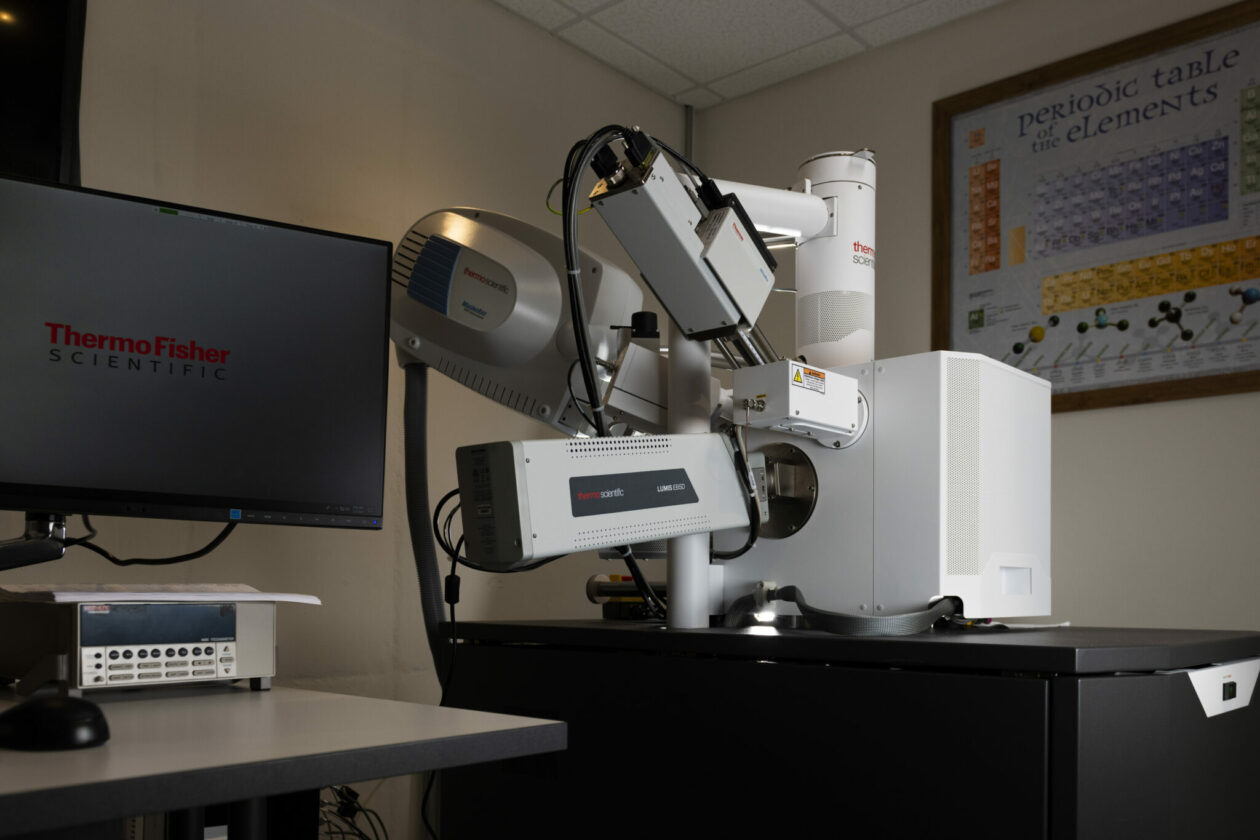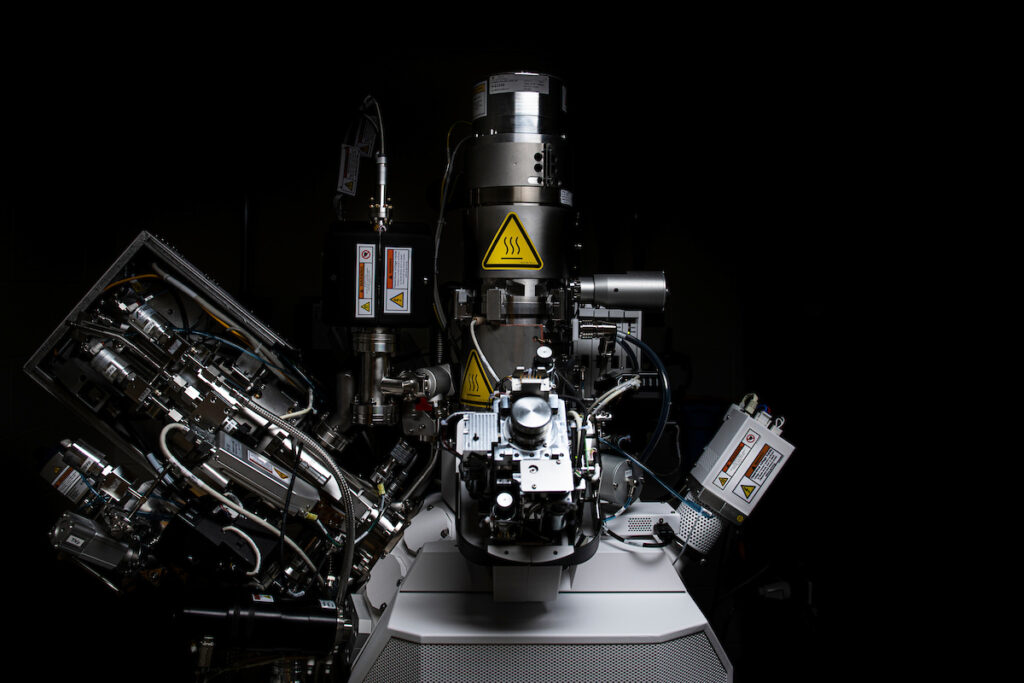New, state-of-the-art equipment expands opportunities for research
Posted by Nancy Bowles

The Scanning Electron Microscope-Prisma from ThermoFisher Scientific is one of two new instruments being installed in McNutt Hall in the winter of 2021. Photo by Michael Pierce, Missouri S&T.
Missouri S&T has expanded and updated its materials characterization capabilities in the past year with the addition of $6 million in equipment. The equipment is available to researchers across the University of Missouri System as well as external users from companies and other institutions.

The centerpiece is a $4 million dual-beam instrument that incorporates a scanning electron microscope and a plasma focused ion beam that enables researchers to deposit or remove materials on the nanoscale and examine what is below the original surface of the specimen without removing it from the microscope.
“If you see something interesting with the electron microscope, you only see what’s on the surface of the material,” says Dr. William Fahrenholtz, Curators’ Distinguished Professor of ceramic engineering and director of the Materials Research Center at Missouri S&T. “The focused ion beam allows you to mill into the material and see if the thing you noticed is just a surface feature or something that extends down into the bulk.”
Missouri S&T has a 10-year-old dual-beam instrument that will remain on campus as a supplement to the new instrument, Fahrenholtz says. He says the current instrument has been in high demand but is no longer the latest technology. Having both instruments will alleviate a research logjam.
Missouri S&T has also acquired a new scanning electron microscope, a 3D X-ray microscope, an X-ray photo electron spectrometer to characterize the microstructures and compositions of materials, two new Rockwell hardness testers, and a dilatometer for research and teaching purposes. These replace older instruments and expand capabilities.
“These new instruments will expand the quality and quantity of research by enabling us to provide better support for researchers,” says Fahrenholtz.
The equipment was acquired with funding through Tier 1 of the University of Missouri System’s Research and Creative Works Strategic Investment Program. The acquisition also benefited from a substantial discount as part of the agreement between the UM system and Thermo Fisher Scientific. Tier 1 projects require a campus match, which S&T provided through the Hasselmann Research Endowment.
“Acquisitions like this usually involve a long, difficult process to obtain external grant money. This equipment and the support from the UM System are transformational for our research,” says Fahrenholtz.
About Missouri University of Science and Technology
Founded in 1870 as the University of Missouri School of Mines and Metallurgy, Missouri University of Science and Technology (Missouri S&T) is a STEM-focused research university of over 7,600 students and part of the four-campus University of Missouri System. Located in Rolla, Missouri, Missouri S&T offers 99 different degree programs in 40 areas of study, including engineering, the sciences, business and information technology, education, the humanities, and the liberal arts. Missouri S&T is known globally and is highly ranked for providing a strong return on tuition investment, exceptional career opportunities for graduates, and an emphasis on applied, hands-on learning through student design teams and cooperative education and internship opportunities. For more information about Missouri S&T, visit www.mst.edu.
Leave a Reply